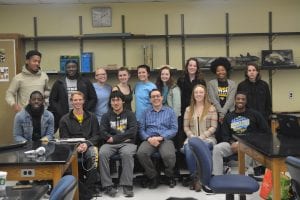
Well, final papers are graded and final grades are in. Overall, the class was a success. I’ve been reflecting back on the beginning of the semester the past week or so, and am impressed with how far everyone has come. Some things worked well, some were okay, and some things I’ll be revising the next time I teach the course. My goal, was to give more students authentic research experiences in organismal biology, focusing on form, function, and performance. At the end of the class, I think I succeeded with that. We had four unique projects, some on topics that have not been investigated before. Students learned to use high-speed cameras, digitized animals to get kinematics and performance, present research, and write up their research. They all had hypotheses that they tested.
There are several things I think worked really well. The first, is having dedicated time in a classroom setting for research. Students have lots of other priorities (e.g., work, other classes, family commitments, etc.) and I have found it hard for them to have time for research. Having everyone in the class at the same time allowed me to move everyone through at a similar pace. Some groups were more ahead then others, but all relatively on the same page. Another thing that worked well was having students come up with questions related to animal form, function, and performance. I was worried about this at the start, everything, including the organisms, was a complete unknown. But, everyone got the hang of filming animals and motivating them to perform well (special thanks to the wooden dowels for motivation!). Field collecting was also a highlight. Many of these students have never been outside for a Biology class, and they really woke up when we went collecting. 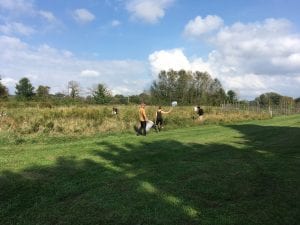 Many of their hypotheses came from catching and observing animals in nature. Weather was not on our side this semester, but the two days we did go out were beautiful and everyone seemed to have a great time. Lastly, having assignments related to students finding related articles from the primary literature seemed effective at getting them to look at other studies and refine their hypotheses.
Many of their hypotheses came from catching and observing animals in nature. Weather was not on our side this semester, but the two days we did go out were beautiful and everyone seemed to have a great time. Lastly, having assignments related to students finding related articles from the primary literature seemed effective at getting them to look at other studies and refine their hypotheses.
Several things did not work well this semester. The first, as I just mentioned, was weather. I did have a contingency day build in, and we needed it. But we got rained out a lot. Group work was also challenging. We had a professional development on group work and peer evaluation, which I had not even thought about prior to the class. I implemented a peer evaluation system and had groups of 2, 3 and 4, but I need to revise it for the next class. The other major hurdle was varying operating systems and student computer literacy. I didn’t anticipate having a full 4 hour class to trouble shoot R, but I did because of weather and I will keep that in for future iterations. I tried working in the computer lab, where everyone was on the same operating system, but that was also challenging. So, in the future, I will probably spend more time working through computer programs (we used ImageJ, some students used Tracker, and R). Lastly, the final papers seemed a bit rushed, so I will likely emphasize them earlier in the class (note: all rubrics were posted to blackboard at the start of the class, so they did know there was a paper), potentially including a draft as an assignment so I can provide feedback.
At the beginning of the semester I was 50% excited, 50% terrified. There were a lot of unknowns. Could we get animals, could we film them, could students come up with hypotheses? About half way through when we were in the thick of collecting videos, I realized the class was actually working. Grasshoppers jumped, water striders strided?, crayfish escaped, and stinkbugs flew. I was also concerned about not having enough to do later in the class, but just having them time for them to work on research seemed effective. This class set a high bar for what I will expect next time. I also learned a lot about different animals I never really thought about before. So, win/win.
Next planned class is for Fall 2020, see you then….
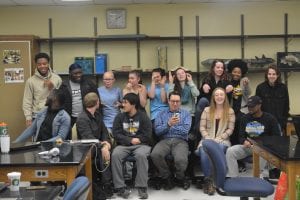
And just because I really enjoyed their research abstracts as movie trailers, here they are again:













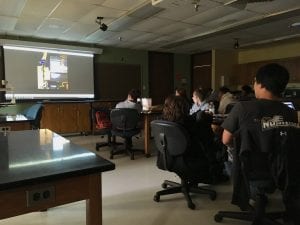 editing, creativity, and creative commons music (which we discussed). They were a bit skeptical of the assignment, not sure of what I was looking for, and asked if I had ever done one, which I had not. But, since we had an unexpected snow day the Thursday before, I decided to try my hand at it and created one for them. This was a really fun assignment, every group did a great job at showcasing their research and creativity. As a bonus, I will be sharing their videos with the faculty and staff here as advertisements for each group’s poster coming up at our Dept.’s annual fall poster day. The group that gets the most faculty to visit (they’ll have sign in sheets) based on their trailers will get some bonus points. I’ve also considered giving a bonus to the group that has the most views on social media as they are posted on youtube and twitter. Below are the trailers, get some popcorn and enjoy!
editing, creativity, and creative commons music (which we discussed). They were a bit skeptical of the assignment, not sure of what I was looking for, and asked if I had ever done one, which I had not. But, since we had an unexpected snow day the Thursday before, I decided to try my hand at it and created one for them. This was a really fun assignment, every group did a great job at showcasing their research and creativity. As a bonus, I will be sharing their videos with the faculty and staff here as advertisements for each group’s poster coming up at our Dept.’s annual fall poster day. The group that gets the most faculty to visit (they’ll have sign in sheets) based on their trailers will get some bonus points. I’ve also considered giving a bonus to the group that has the most views on social media as they are posted on youtube and twitter. Below are the trailers, get some popcorn and enjoy!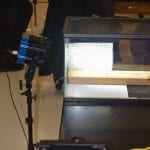
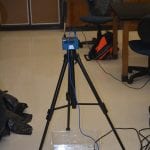
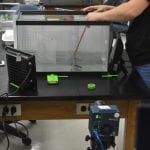

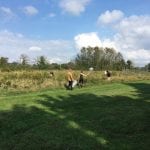
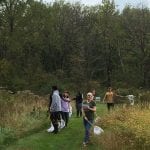
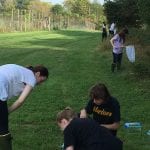
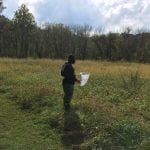
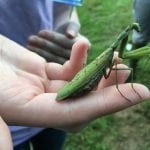
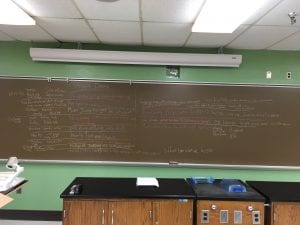 Students then went back out to the Glenn Arboretum to collect some invertebrates with Aaron and Jess. They came back with a bunch of organisms. Instead of filming, I wanted to give them time to talk about project ideas. So, I had them brainstorm. We wrote all the ideas on the board and started thinking about experimental design, sample sizes, and feasibility. They had an assignment due the next Monday on an initial project idea with citation. Starting to move from learning about animal movement and research to conducting research. In class on Wed. we had a lecture on jumping and discussed a paper on hindlimb length and jumping in leafhoppers.
Students then went back out to the Glenn Arboretum to collect some invertebrates with Aaron and Jess. They came back with a bunch of organisms. Instead of filming, I wanted to give them time to talk about project ideas. So, I had them brainstorm. We wrote all the ideas on the board and started thinking about experimental design, sample sizes, and feasibility. They had an assignment due the next Monday on an initial project idea with citation. Starting to move from learning about animal movement and research to conducting research. In class on Wed. we had a lecture on jumping and discussed a paper on hindlimb length and jumping in leafhoppers.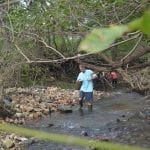
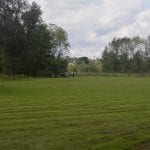
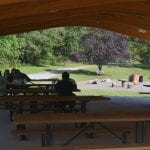
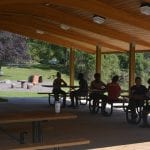
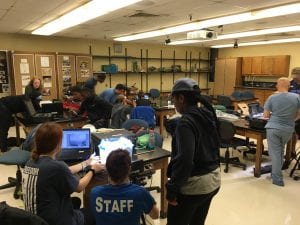 A quarter of the way through the semester. Weather has not been on our side. For week 3 we spent our time in lab practicing to film using some of the crayfish we had. Everyone got some crayfish escapes. We then moved to the computer lab to learn digitizing using the MTrackJ plugin for ImageJ. We used one of the praying mantis videos I had, and after we worked through the protocol, students started clicking (and clicking and clicking and clicking). They had an assignment due at the start of the next lab day tracking one point from one of the crayfish videos. Digitized points were graded based on this
A quarter of the way through the semester. Weather has not been on our side. For week 3 we spent our time in lab practicing to film using some of the crayfish we had. Everyone got some crayfish escapes. We then moved to the computer lab to learn digitizing using the MTrackJ plugin for ImageJ. We used one of the praying mantis videos I had, and after we worked through the protocol, students started clicking (and clicking and clicking and clicking). They had an assignment due at the start of the next lab day tracking one point from one of the crayfish videos. Digitized points were graded based on this 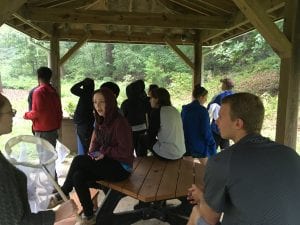
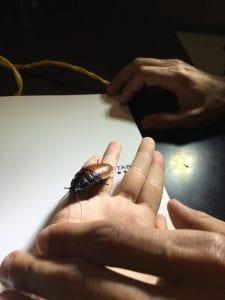 . We spent Monday going over logistics of the course, introductions of the class, some basic camera principles, and then got into filming. Every student held a hissing cockroach (good for an organismal course), and every student captured a high speed video of something moving. The video was part of their first assignment, worth 5 points and based off the following rubric I created to ensure they understand what makes a good video for analysis (
. We spent Monday going over logistics of the course, introductions of the class, some basic camera principles, and then got into filming. Every student held a hissing cockroach (good for an organismal course), and every student captured a high speed video of something moving. The video was part of their first assignment, worth 5 points and based off the following rubric I created to ensure they understand what makes a good video for analysis (